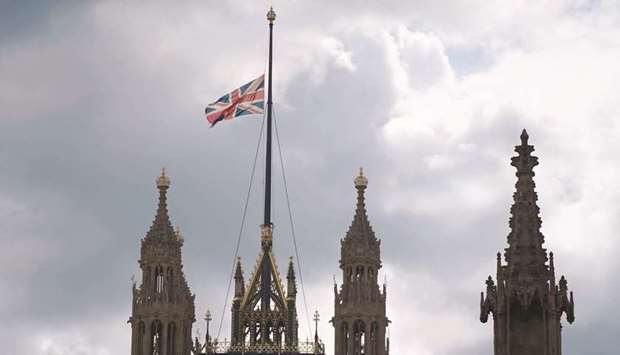Of the many sacrifices the Duke of Edinburgh had to make in marrying, one truly angered him.
As he once put it: “I am the only man in the country not allowed to give his name to his children.”
The question of what the royal family and its descendants should be called proved taxing.
Princess Elizabeth was a Windsor, a name adopted under the 1917 proclamation by George V to replace the German Saxe-Coburg-Gotha.
The proclamation, however, did not cover married female descendants, so she should have taken her husband’s name.
Philip was a Mountbatten, an appellation adopted on his British naturalisation, and an anglicised version of his mother’s Battenberg family name.
That their first-born son could be the first king in the House of Mountbatten proved too unpalatable for Winston Churchill’s cabinet, which put pressure on the Queen.
Caught in the crossfire, she was sympathetic to her husband’s desire but was persuaded to give her formal approval to a proclamation in April 1952 that she and her descendants “should continue to bear the family name of Windsor”.
An exasperated Philip complained to friends that he was regarded as “nothing but a bloody amoeba”.
However, in 1960, with the birth of Prince Andrew, the Queen told the Privy Council she had decided that her descendants – other than her children, those entitled to use the HRH title, and female descendants who marry – could bear the surname Mountbatten-Windsor.
But it was not until the birth of a daughter to the Earl and Countess of Wessex in November 2003, that Philip’s wish would at last be realised.
Edward is expected to inherit the title of Duke of Edinburgh, and has carried on the international award scheme set up by and named after his father.
For all his gruff exterior and refusal to emote in public, the duke was proud of each of his four children.
They had all, he said in a rare tribute during his golden wedding celebrations, “done rather well given difficult circumstances”.
Perhaps, though, his relationship with his first-born was more strained than most.
Jonathan Dimbleby’s authorised biography of the Prince of Wales highlighted a difficult relationship between two very different men.
While Philip thrived in the tough, competitive and physically harsh and challenging environment at Gordonstoun in Scotland, becoming guardian (head boy) in his last term, Charles hated it and was bullied.
While Philip expressed himself bluntly, his son was acutely sensitive.
As a young prince, Charles was said to have been frightened of his father, being reduced to tears by public reprimands, and fearful that he would be regarded as a wimp.
Philip once declared: “He’s a romantic and I’m a pragmatist. That means we see things differently.”
Anne, who inherited her father’s no-nonsense approach, is said to be most similar in temperament.
Andrew followed his navy tradition, and like Philip, who was mentioned in dispatches during the Second World War, saw active service during the Falklands conflict.
Philip was the patriarch and tried to guide his family.
It was he who wrote to Charles telling him to make up his mind when, amid febrile speculation, he appeared to procrastinate over whether to propose to Lady Diana Spencer.
And, as was revealed after Diana’s death, when her marriage was rapidly disintegrating, he wrote several sympathetic letters to her, signed “with love from Pa”.
Private footage from the family’s home movies archive shows him as an energetic, enthusiastic young father, rolling around in sand dunes or playing on slides.
But it was a Philip the public rarely got to see, as he balanced the responsibilities of being a royal and the “grey area of existence between official and what is left of private life”.
“Like all families, we went through the full range of the pleasures and tribulation of bringing up children,” he said at his golden wedding celebrations. “I am, naturally, somewhat biased, but I think our children have all done rather well under very difficult and demanding circumstances and I hope I can be forgiven for feeling proud of them.”

The Union Flag flies at half-mast from Victoria Tower over the Houses of Parliament in central London.
